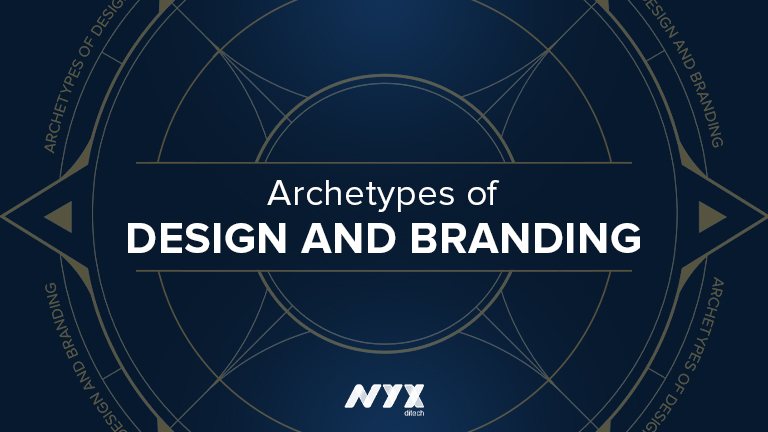10 Archetypes of Design and Branding

Present-day competition demands a deep understanding of the brand archetype. It only not assists in representing the identity better but also assists in creating a deeper connection with potential customers. Brand archetypes are based on the study performed by Carl Gustav Jung during the 1890s.
After that, some modification was performed by Carol S. Pearson to sort brand archetypes as per the 19th century. They are still used for developing a marketing strategy to boost a company’s earnings. Let us discuss the top 10 branding archetypes with proper details in this post.
The Creator
This archetype talks about creativity and innovation. Normally, the brands that come under this category are the creator or inventors of the latest technology.
The major motive of these brands is to eliminate a problem by launching something previously not present in the world.
Premier examples of this approach are YouTube, Adobe, and Pinterest who have changed lives of millions.
The Hero
As the name suggests, this one is considered a sign of inspiration, and brands following it works to improve the world. Such brands are very common in the outdoor and sports industries.
This approach has assisted numerous brands in achieving success that very few have.
A few notable examples of this archetype are American Red Cross, Accenture, Nike, and Marvel.
The Caregiver
The brands that work to provide advice and services for the welfare of the community comes under the caregiver category.
They are known for passion, generosity, efficiency, and sacrifice, which make things convincing.
The premier examples of this archetype are Johnson’s, Marriott, and Volvo.
The Rebel
These brands prefer freedom, stay away from conformity, and allow customers to show their unorthodox identity.
It mainly works for brands related to tattoos and motorcycles in the real world.
Some examples of the Rebel archetype are Harley-Davidson and Diesel, which are very popular for such attitudes.
The Explorer
This archetype focuses on the audience’s wishes to travel and find new communities and places. The explorers always look for paths using which self-fulfillment can be attained with proper freedom. They have a huge curiosity to let the world knows about them.
In the Explorer archetype, there is a huge value given to self-discovery for extra uniqueness. Although the market attaches this archetype to the adventure, it isn’t the only method for marketing this technique.
Some notable examples of this archetype are Red Bull, NASA, Timberland, National Geographic, North Face, and Jeep. All of them have successfully implemented this technology with great results.
The Ruler
This archetype work on the philosophy of dominance, superiority, and control. The Ruler is the one who wishes for success and wants it for everyone who follows them.
Their major traits are confidence and responsibility, which they never want to miss at any cost. This industry is ruled by brands related to high apparel, luxurious cars, premium watch companies, and hotels.
The names like Rolex, American Express, Apple, and Qantas are prime examples of The Ruler archetype branding.
The Sage
This archetype represents truth and wisdom in various sectors, like schools & universities, media & news outlets, search engines, etc. The main motive of this strategy is responding to the needs of consumers and respecting their knowledge.
The brands that follow the Sage understand the layered meanings and well-researched information.
Well-known examples of this technology are CNN, Mayo Clinic, Google, BBC, The New York Times, and TED.
The Lover
The Lover archetype is followed by brands that target aesthetic appeal and become strong beauty advocates. Their main motive is to create a desire in their customers for intimacy and passion.
Whether it is about creating sensual short films or a chocolate company, the main motive is to develop feelings with their products or services.
Some examples of the Lover archetypes are Godiva, Loreal, Victoria’s Secret, and Alfa Romeo.
The Regular Guy
The Regular Guy is a low-cost strategy for targeting the general public instead of a particular audience. They try to build emotional connections with their customers.
The major characteristics of this archetype are sincerity, common sense, and hard work, which are common among the general audience.
It is used by many known brands, like GAP, Walmart, Levi’s, and Budweiser.
The Magician
We believe many people should have understood from the name of this archetype that their main motive is transforming dreams into reality. The brands always offer transformative experiences to their customers using this approach.
They have a huge focus on creativity and imagination to deliver idealistic and spiritual experiences.
Many well-known brands, like Dyson, Disney, Mary Kay, and Polaroid, have used this technology for success.
Wrapping up
We strongly believe the information about major archetypes of design and branding has been acknowledged in this post. Always understand that selecting the right archetype is key to success in the market.
Want to say something regarding these archetypes? Feel free to write back to us!
Read more about avoiding mistakes in branding here.

